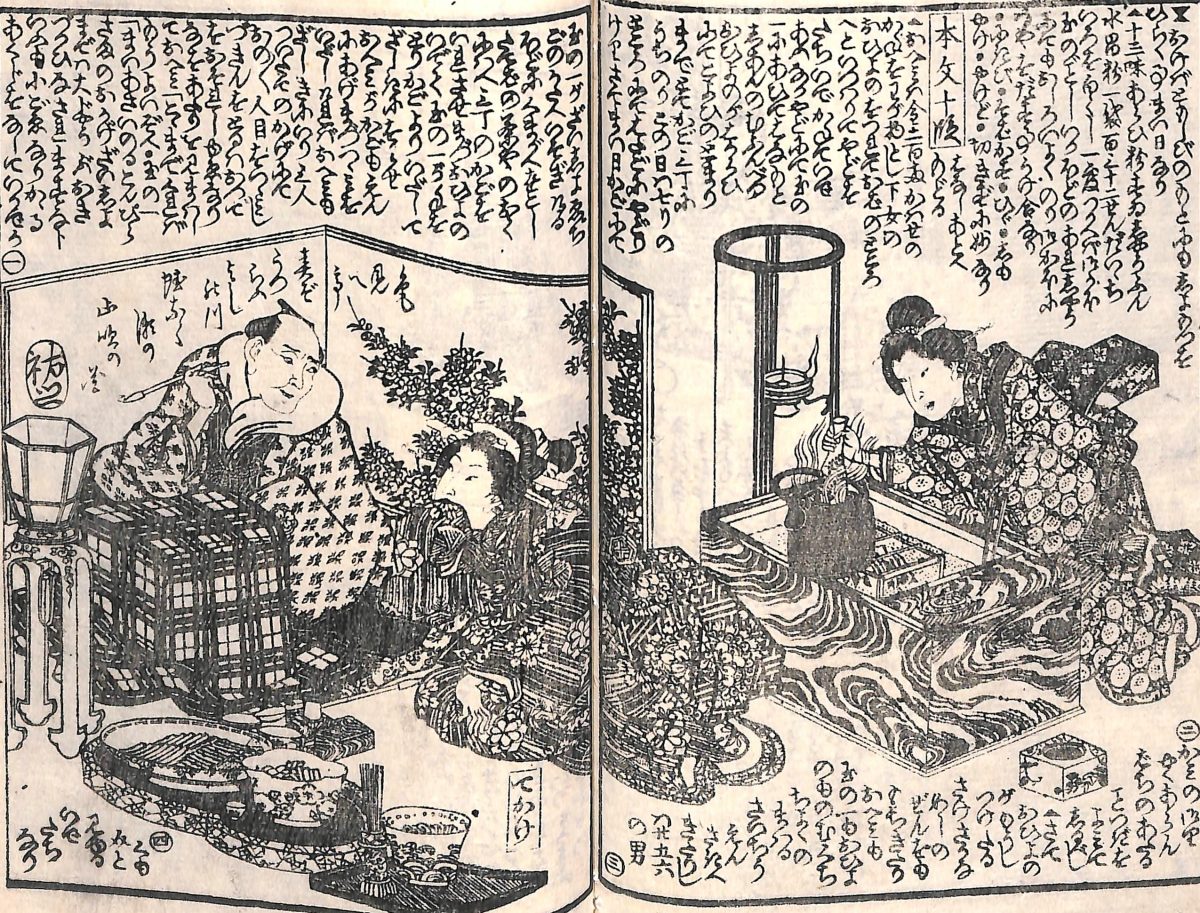Hello! December has come and it’s getting colder by the day. On cold days like these, a perfect drink is kanzake, or warm sake. To enjoy warm sake at its best without spoiling the flavor and taste, it is important to know how to warm it properly. In this post, we will share the methods for warming sake, described in historical documents.
The custom of drinking warm sake already existed in the Edo period (1603-1868). In the early days, sake was poured into a flat pot called a kan-nabe and warmed over an open flame. Later, with the rise of pottery and porcelain, tokkuri sake bottles (previously introduced in a past article) came into use. Pottery and porcelain tokkuri sake bottles were useful because sake could be warmed by dipping the bottles in hot water, making it easier to control the temperature compared to warming it over an open flame.

The custom of drinking warm sake has been passed down to this day, and sake brewing companies use advertisements and the like to show the proper way to warm sake. Now, let’s look at one example of a historical advertisement created by Tatsuuma-Honke Brewing Co., Ltd. titled “How to warm renowned brand sake Hakushika”. According to the advertisement, warming sake by dipping a tokkuri bottle of sake directly in hot water is not the best way. Instead, the company recommended first pouring sake into a container used for warming sake called “shukanki”, and dipping the container in a pot or kettle filled with hot water. Once it is warmed, the sake can then be poured into a tokkuri sake bottle. The advertisement also indicated that the key to warming sake is controlling the temperature. A silver shukanki container was recommended rather than an iron container which could affect the flavor of the sake.
A second point on the advertisement emphasized that warming sake over an open flame must be avoided because the temperature cannot be properly controlled. The best temperature for hot water is just before the boiling point, not beyond.

Thirdly, the advertisement introduces “the variety of sake temperatures and how to enjoy each one”. For high-grade sake, lukewarm heat is optimal for the flavor (130℉ Fahrenheit or 55°C Celsius). This temperature is denoted as “nuru kan” or lukewarm sake in this advertisement, whereas the current temperature of lukewarm sake as posted on the Japan Sake and Shochu Makers Association website is 40°C (104°F), while 55°C is denoted as “tobikiri kan“, or very hot sake. In other words, what was considered the optimal temperature at the time of the advertisement is considered “very hot sake” today.

So far, we have learned that controlling the temperature is crucial when warming sake. However, checking the temperature each time when drinking warm sake at home can be a hassle. The advertisement teaches an easier way of knowing the temperature: “When warming sake in hot water, remove the tokkuri sake bottle or shukanki container with sake from the hot water and touch the bottom with your hand. If you feel it is hot enough, the sake is ready to enjoy.” Another easy method was given: “When you put a tokkuri sake bottle into a pot of hot water, you will notice dewdrops on the shoulder of the bottle. When the dewdrops disappear, the sake is ready to enjoy.” These methods seem to be much easier than measuring the temperature each time.
In conclusion, we have learned that the key to warming sake is to control the temperature. Since the preferred temperature of warm sake differs depending on the era and the person, how about finding your own favorite way to enjoy warm sake this winter? Let’s welcome the coming year with delicious warm sake. We look forward to seeing you next year.











We “Nishinomiyans” are proud to present Miyamizu water!